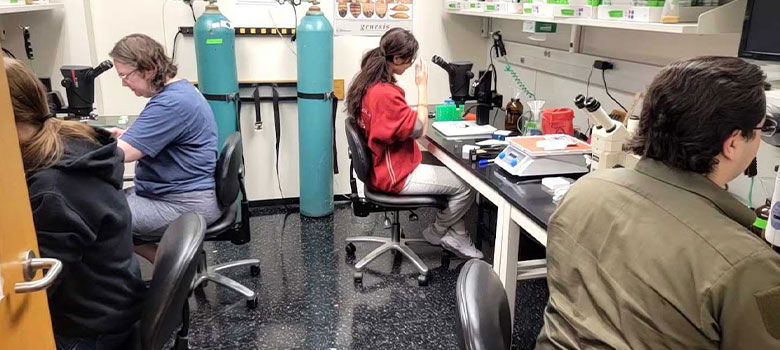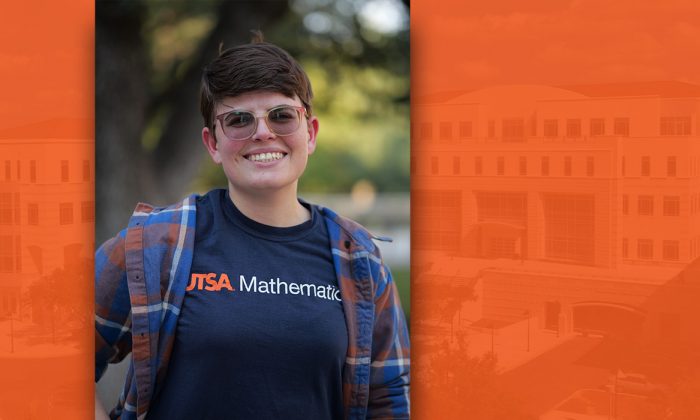Editor’s note: This summer, we’re shining a spotlight on Roadrunner researchers and the innovative work they are doing in labs across campus and beyond. Today, we look at a UTSA lab dedicated to the study of developmental fertility.
At one UTSA lab, researchers are on a quest to understand the developmental underpinnings of fertility.
Working under the supervision of Assistant Professor Lacy Barton, trainees at the UTSA Barton Lab are exploring how reproductive cells develop correctly — and sometimes incorrectly — sending them off course.
Creehan Healy ’25 is a UTSA alumna who has been working in the lab since 2023. This summer, she is working with the team to understand how future egg and sperm cells develop, which can give insights into human health issues ranging from infertility to some cancers.
“It’s this beautiful and endlessly awe-inspiring biology that we get to uncover while training the next generation of scientists here at UTSA.”
— Lacy Barton

In most animals, primordial germ cells — the precursors to egg and sperm cells — must migrate through many tissues in the developing embryo.
“This journey begins in early embryogenesis,” Healy said. “In humans, if this journey doesn’t happen properly, then those mis-migrated cells can go on to form tumors. We’re trying to understand why that happens.”
Creehan, together with graduate students and postdoctoral fellows, have recently found that parental age may play a critical role in the successful development of reproductive cells.
“We have some preliminary findings to suggest that calcium signaling gets increasingly dysregulated with parental age, causing an increased risk of tumors,” Barton said.
While fertility can be affected by several factors, Healy noted that the development of reproductive cells often prevails in the face of adversity.
“We have found that germ cells are resilient, which makes sense because if they weren’t, species would die out,” Healy said. “We can do a lot to experimentally disrupt this journey, but life finds ways of compensating.”
Barton described this as a “catch-up mechanism.”
“In some species, when too few germ cells migrate to the ovary or testis, they then proliferate faster to ‘catch up.’ It’s this beautiful and endlessly awe-inspiring biology that we get to uncover while training the next generation of scientists here at UTSA,” Barton said.
The Barton Lab is part of the Department of Neuroscience, Developmental and Regenerative Biology, and is supported by a three-year grant from The Max and Minnie Tomerlin Voelcker Fund to continue to uncover the causes of germ cell tumor formation. The team hopes that their insights into germline development can lead to a better understanding of fertility and reproductive health across species.
Healy will continue her research journey as a PhD student in Cell and Developmental Biology at UCLA this fall.



